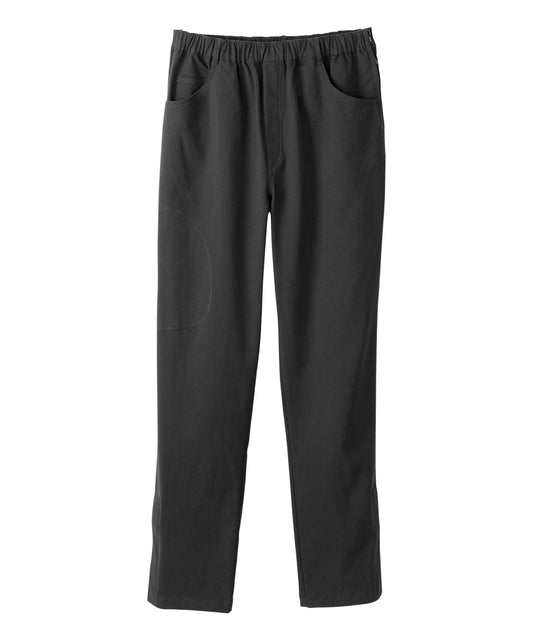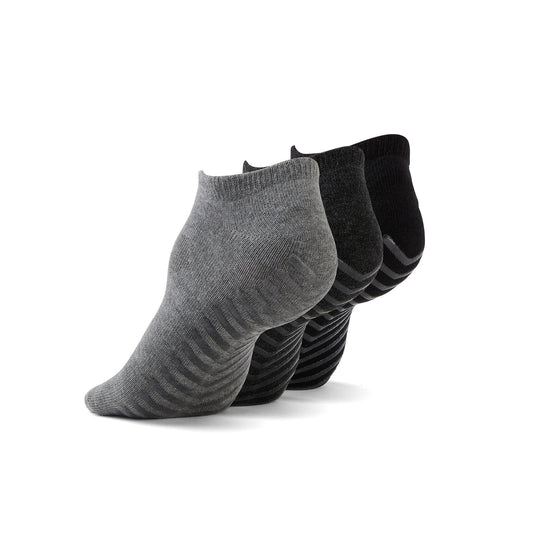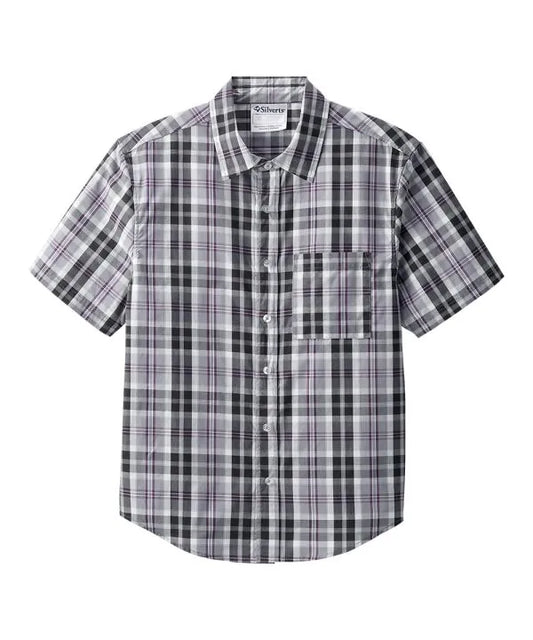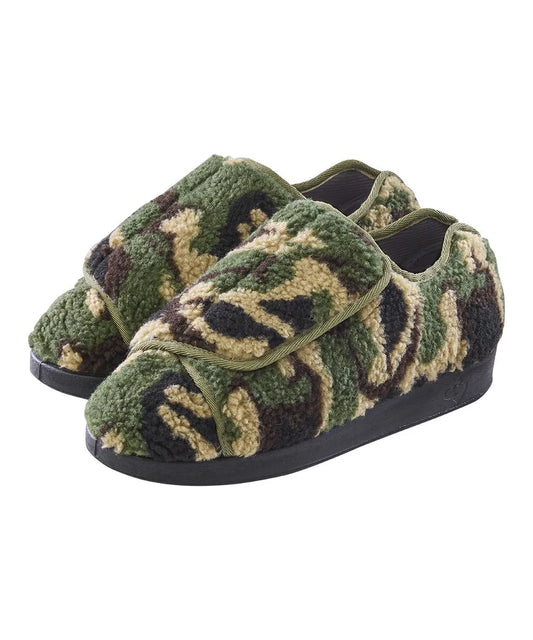Swollen feet, a condition also known as peripheral edema, is a common yet often overlooked health concern that affects individuals of all ages, backgrounds, and walks of life. Characterized by the abnormal accumulation of fluid in the tissues of the lower extremities, swollen feet can have a significant impact on an individual's comfort, mobility, and overall well-being.
Swollen feet should not be disregarded as a minor inconvenience, especially in the elderly. Rather, they can serve as a window into an individual's overall health. The feet, often seen as the foundation of mobility and independence, can provide valuable insights into the state of an elderly person's cardiovascular and circulatory systems. Swollen feet can signify underlying health problems that, if left unchecked, might lead to more serious complications.
Physiological Factors:
- Reduced Circulation
o As the chronological years advance, the body's once-vigorous circulation system begins to undergo subtle shifts. The once-flexible blood vessels may gradually lose some of their elasticity, leading to compromised blood flow and reduced efficiency in fluid exchange between tissues. In this scenario, the accumulation of excess fluid in the lower extremities becomes a distinct possibility, resulting in the characteristic swelling associated with peripheral edema.
- Venous Insufficiency
o The aging process can take a toll on the intricate network of veins that transport blood back to the heart. The valves within these veins, responsible for preventing the backward flow of blood, may weaken over time. This weakening can lead to venous insufficiency, a condition where blood struggles to move effectively against gravity. Consequently, blood can pool in the lower legs and feet, contributing to both swelling and discomfort.
- Heart Health
o The heart, a central organ in the cardiovascular system, undergoes its own set of transformations as one ages. A weakened heart, often characteristic of elderly individuals, may find it increasingly challenging to pump blood with the same efficiency as in earlier years. The resultant backlog of fluid and blood in the extremities can manifest visibly as swollen feet, providing a potential warning sign of broader cardiovascular concerns.
- Kidney Function
o Aging can also impact the functionality of the kidneys, vital organs responsible for filtering waste and excess fluid from the body. As their efficiency diminishes, the potential for fluid buildup increases, leading to swelling particularly in the feet and ankles.
Lifestyle Factors:
- Sedentary Lifestyle
o The passage of time can sometimes bring about mobility challenges, leading many elderly individuals to adopt more sedentary lifestyles. Extended periods of sitting or immobility can disrupt the natural flow of blood circulation, impeding the body's ability to effectively manage fluid balance. This compromised circulation can significantly contribute to the development of swollen feet.
- Diet and Sodium Intake
o Dietary habits, often established over a lifetime, can have a profound impact on overall health. The elderly population, susceptible to dietary fluctuations, may inadvertently consume high levels of sodium. Excessive sodium intake can result in fluid retention, a key contributor to peripheral edema. Therefore, the correlation between dietary choices and swollen feet cannot be overstated.
- Medications
o The elderly often contend with a myriad of health conditions, leading to the prescription of various medications. Some commonly prescribed drugs, such as nonsteroidal anti-inflammatory drugs (NSAIDs), calcium channel blockers, and corticosteroids, can disrupt the intricate balance of fluid regulation within the body. The unintended consequence of these medications can be the exacerbation of peripheral edema.
- Obesity
o A more sedentary lifestyle coupled with changes in metabolism can lead to weight gain, a condition particularly prevalent among the elderly. The additional weight places added stress on the cardiovascular system, further compromising circulation and contributing to the occurrence of swollen feet.
Symptoms and Complications:
Swollen feet often present with noticeable visual changes, such as puffiness, tightness, and enlargement of the affected area. Additionally, individuals with swollen feet may experience discomfort, pain, and reduced mobility. If left untreated, persistent swelling can lead to skin changes, infections, and even the development of ulcers in severe cases. Thus, understanding and addressing the underlying causes of swollen feet are essential to prevent potential complications.
Management and Prevention:
Managing and preventing swollen feet involve a combination of lifestyle changes, self-care measures, and, in some cases, medical intervention. Here are some strategies to consider:
- Elevate the Feet
o Raising the legs above heart level can promote better blood circulation and help reduce swelling.
- Compression Garments
o Graduated compression stockings can aid in improving blood flow and preventing fluid buildup.
- Physical Activity
o Regular exercise can enhance circulation, strengthen the cardiovascular system, and help prevent fluid retention.
- Healthy Diet
o Reducing sodium intake and consuming a balanced diet rich in fruits, vegetables, and whole grains can support overall fluid balance.
- Stay Hydrated
o Proper hydration helps maintain fluid balance and supports the lymphatic system.
- Avoid Prolonged Sitting or Standing
o Frequent movement and leg exercises can prevent blood from pooling in the lower extremities.
- Medication Management
o If swollen feet are a side effect of medication, consulting a healthcare professional about potential alternatives or adjustments is advisable.
- Compression Stockings
o Graduated compression stockings can provide support to veins and help prevent fluid pooling in the lower legs. Consult a healthcare professional to determine the appropriate compression level. The June Adaptive Diabetic Anti-Slip Socks offer comfort and safety with their specialized design for individuals with diabetes, featuring anti-slip technology.
Diabetic Anti-Slip Socks (3 pairs)
- Avoid Tight Clothing
o Tight clothing, especially around the waist, thighs, and legs, can impede circulation and contribute to fluid retention. Opt for loose-fitting, comfortable attire. The Unisex Ultra-Soft Anti-Slip Crew Socks from June Adaptive offer unrivaled comfort and secure footing for individuals seeking both coziness and safety.
Unisex Ultra-Soft Anti-Slip Crew Socks - 4 pack
- Foot Care
o Keep your feet clean, moisturized, and well-supported with comfortable footwear. Good foot hygiene can help prevent swelling and related complications. The June Adaptive Women's Lightweight Cushioned Shoes offer both comfort and convenience with their rear zipper access design.
Women's Lightweight Cushioned Shoes with Rear Zipper Access Cafe au Lait
Recognizing the Importance of Seeking Medical Attention for Swollen Feet
Swollen feet, known as peripheral edema, can be a common occurrence caused by various factors. While occasional mild swelling might not be a cause for concern, persistent or severe swelling in the lower extremities should never be ignored, particularly in the context of elderly individuals. Knowing when to seek medical attention for swollen feet is crucial, as it can serve as an early indicator of underlying health issues and potential complications. This essay highlights the importance of recognizing the signs that warrant a visit to the doctor when dealing with swollen feet.
When to Seek Medical Attention:
The decision to seek medical help for swollen feet should be guided by a combination of factors, including the severity of symptoms, the presence of underlying health conditions, and any associated warning signs. Here are instances when consulting a doctor is essential:
- Persistent Swelling
o If swelling does not subside within a few days, or if it worsens, scheduling a doctor's appointment is advisable.
- Sudden Onset
o If swelling occurs suddenly and is accompanied by other symptoms like shortness of breath, chest pain, or confusion, seeking medical attention urgently is crucial.
- Preexisting Health Conditions
o Individuals with preexisting conditions such as heart disease, kidney problems, or a history of blood clots should consult a doctor promptly if they experience swelling.
- Infection Signs
o Swelling accompanied by signs of infection, such as redness, warmth, or fever, necessitates immediate medical evaluation.
- Recent Trauma or Surgery
o Swelling following recent trauma or surgery should be evaluated by a medical professional to rule out complications.
Conclusion:
Swollen feet are not just a physical symptom; they are a vital indicator of an elderly individual's overall health and well-being. Monitoring and understanding this condition can provide valuable insights into cardiovascular, circulatory, and renal health, enabling timely intervention and the prevention of more serious complications. By remaining vigilant and recognizing the significance of swollen feet, caregivers, family members, and healthcare professionals can contribute to a higher quality of life for the elderly, promoting comfort, mobility, and a greater sense of independence during the golden years.


















